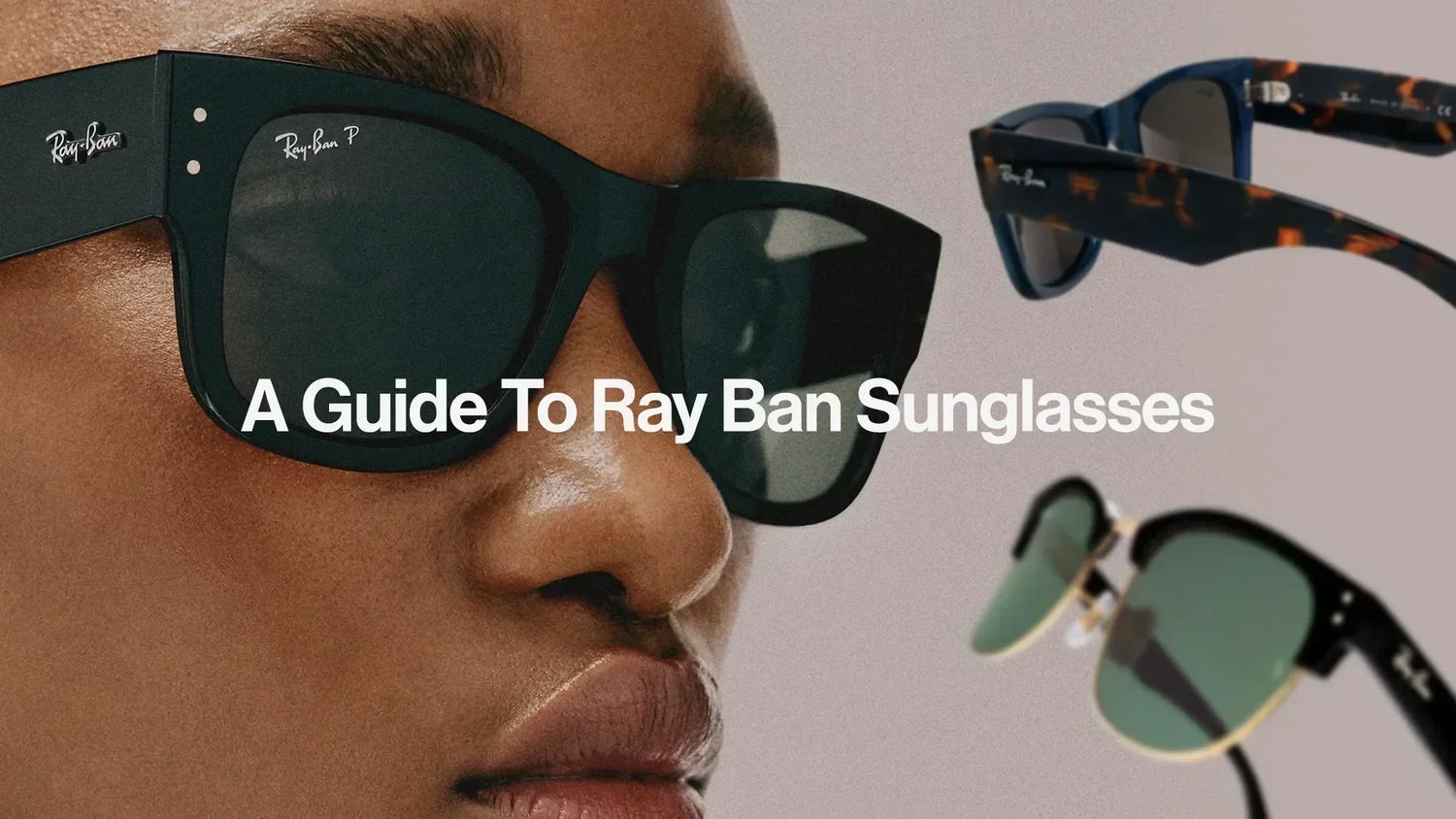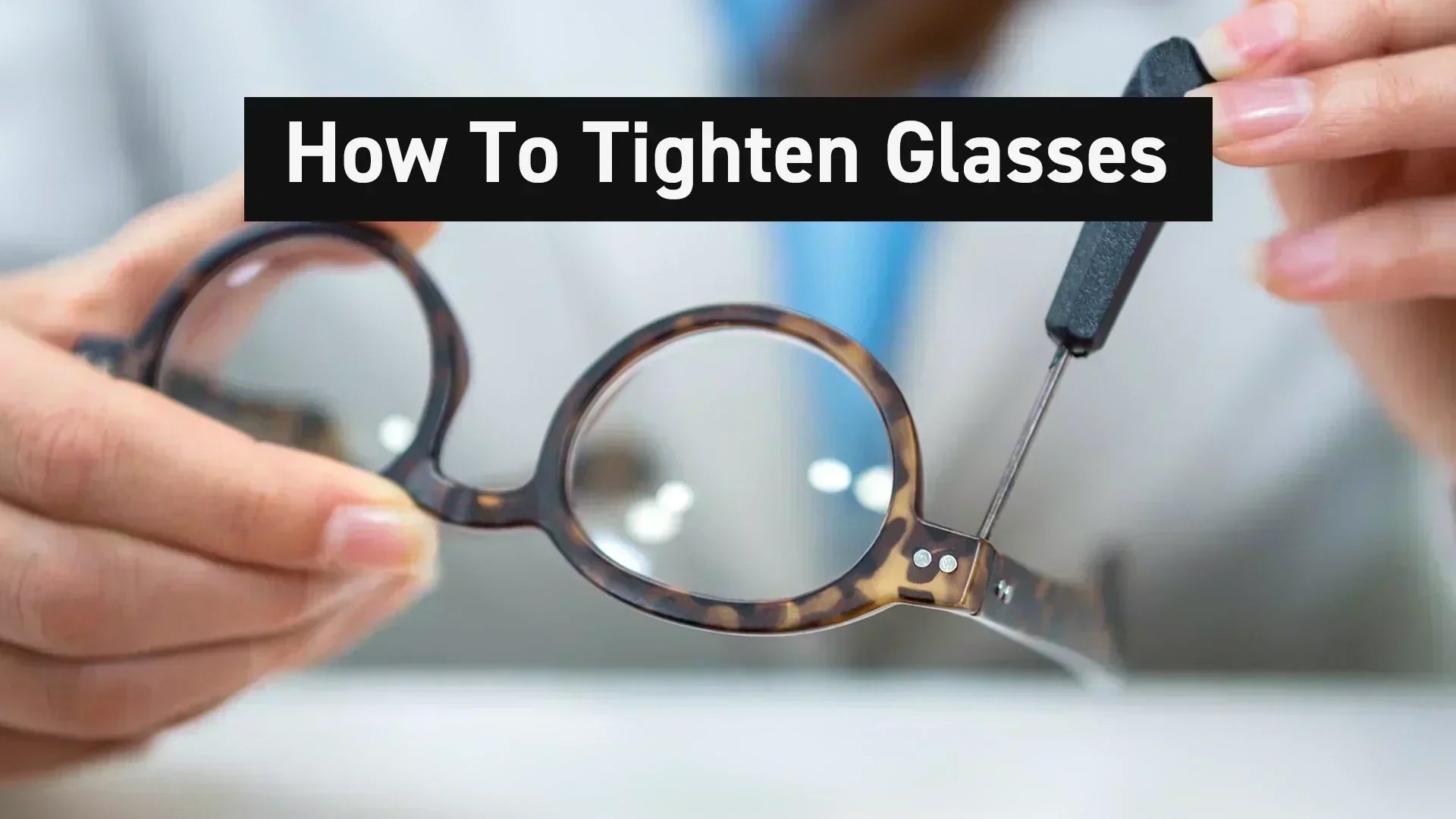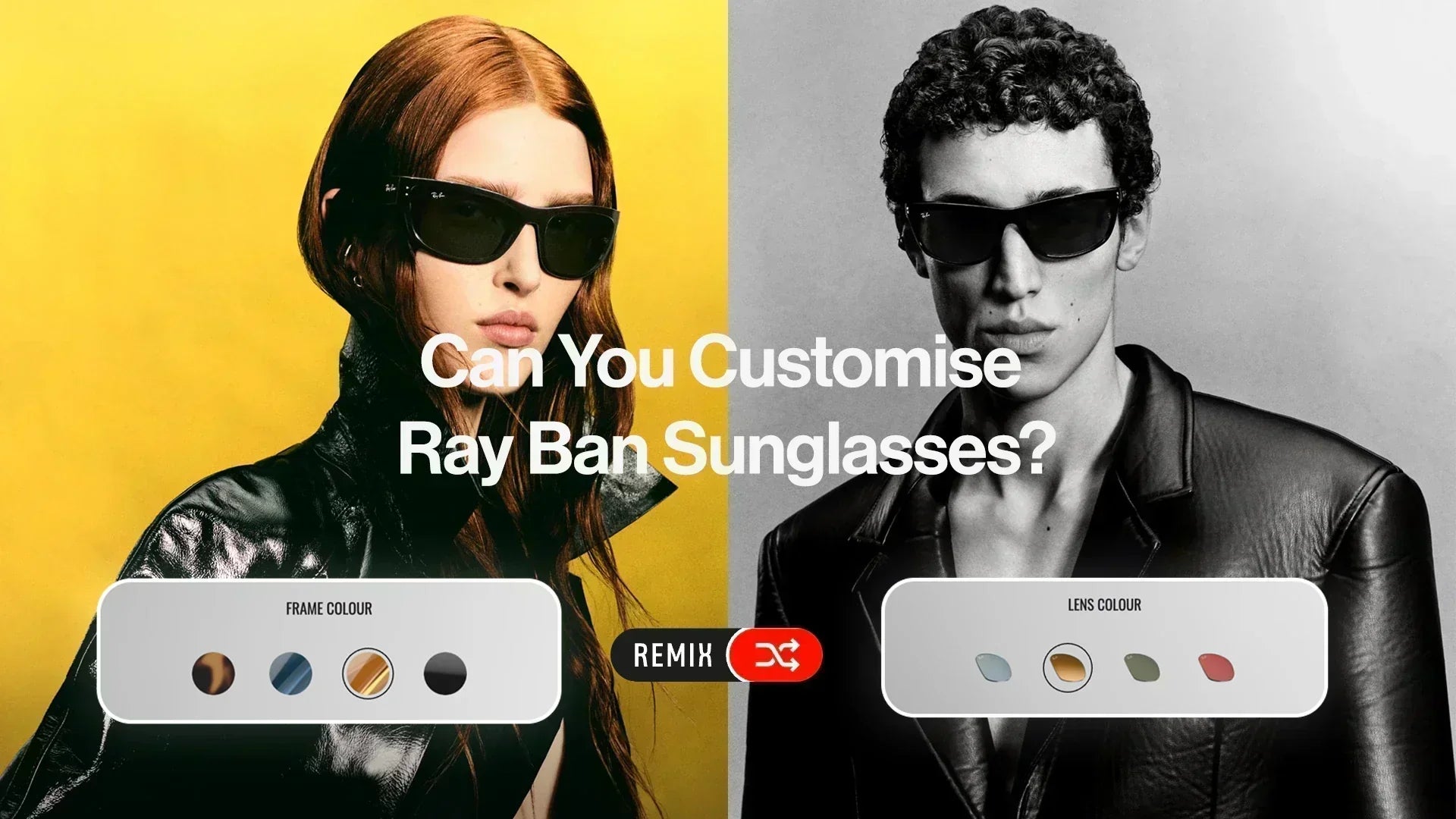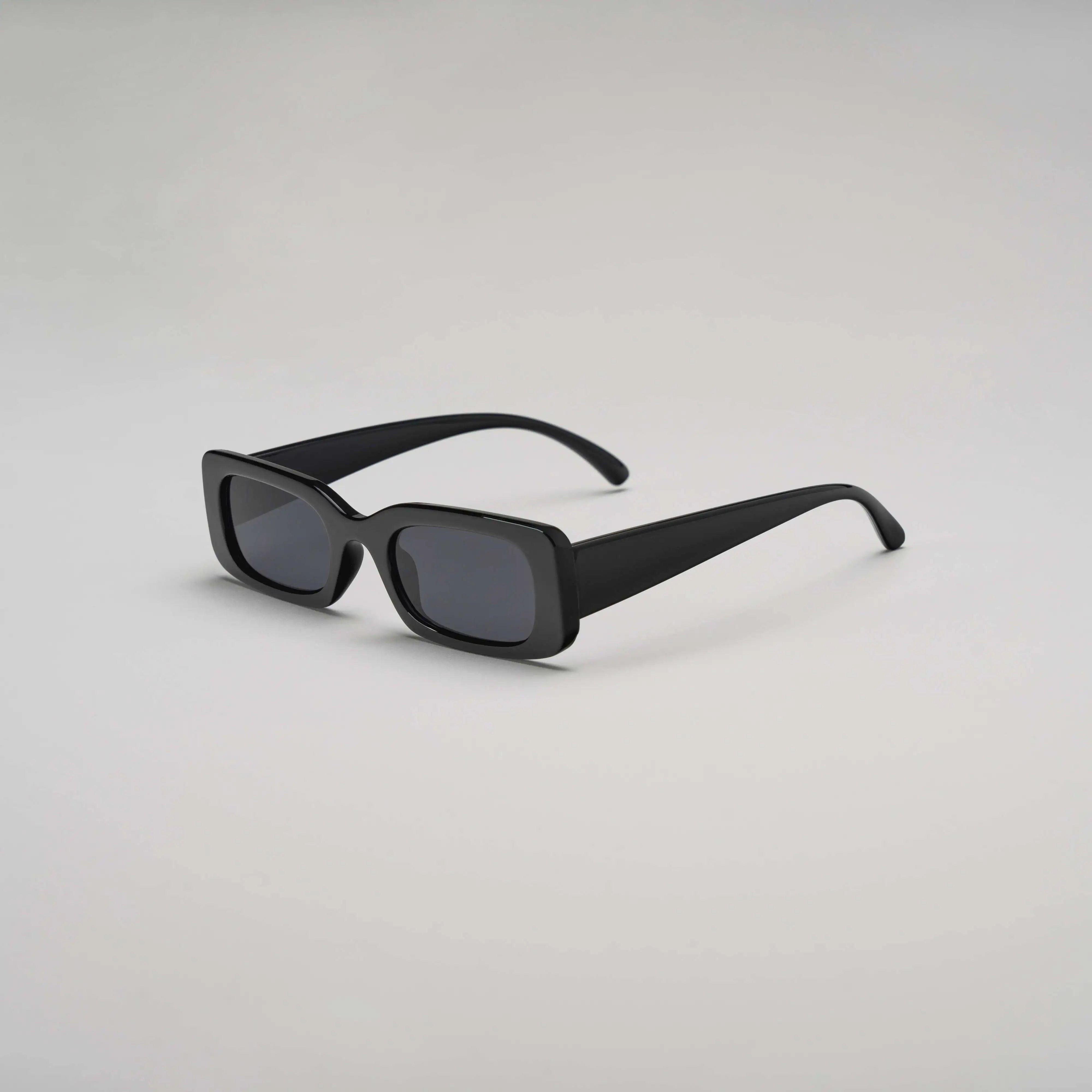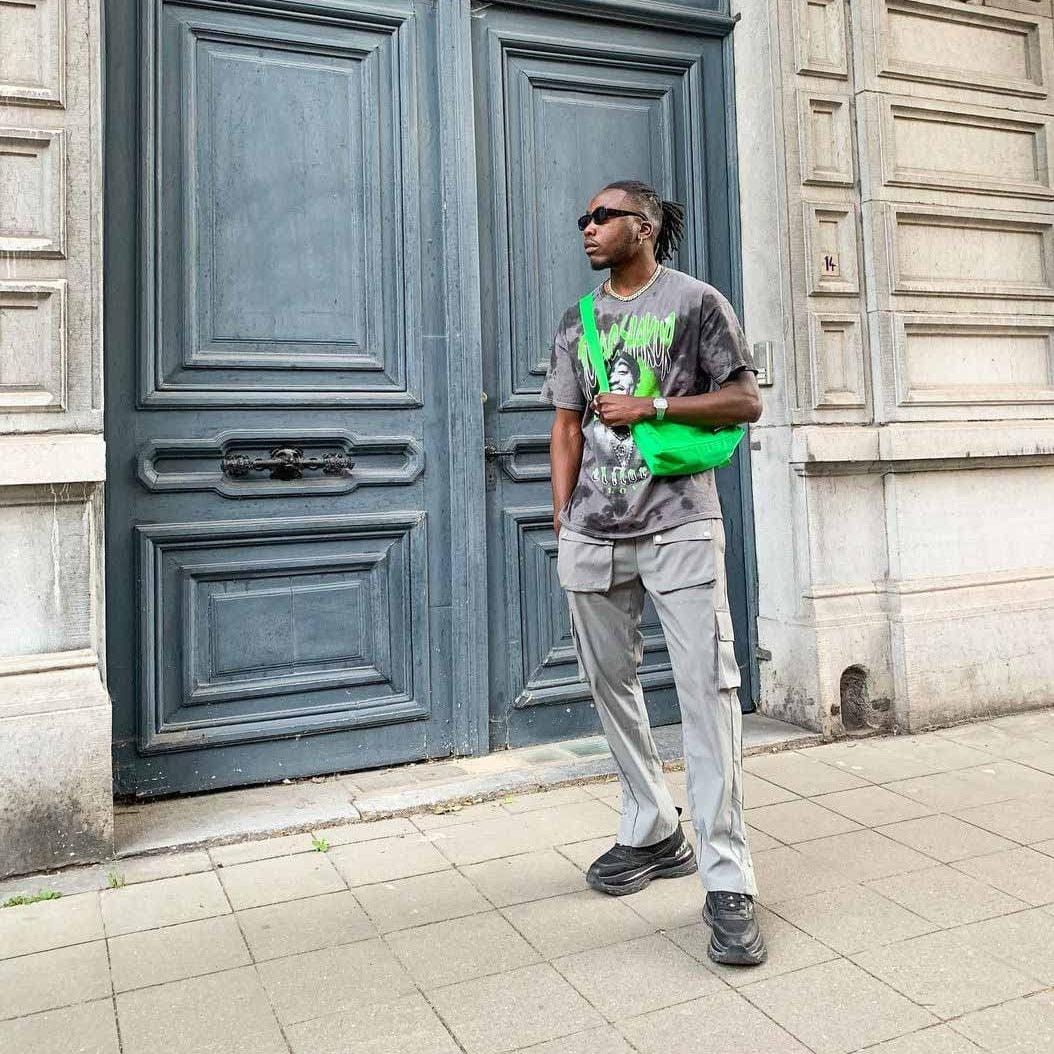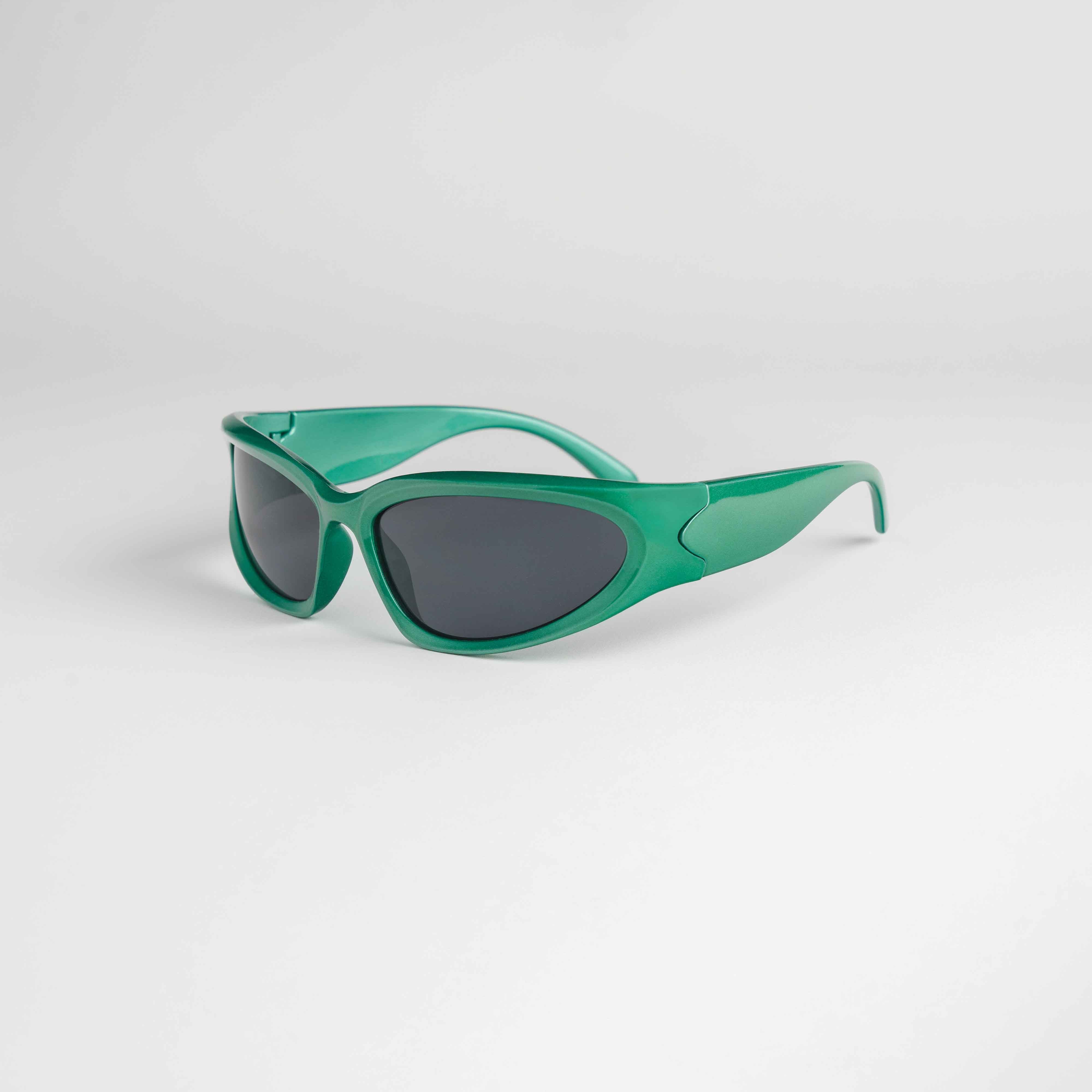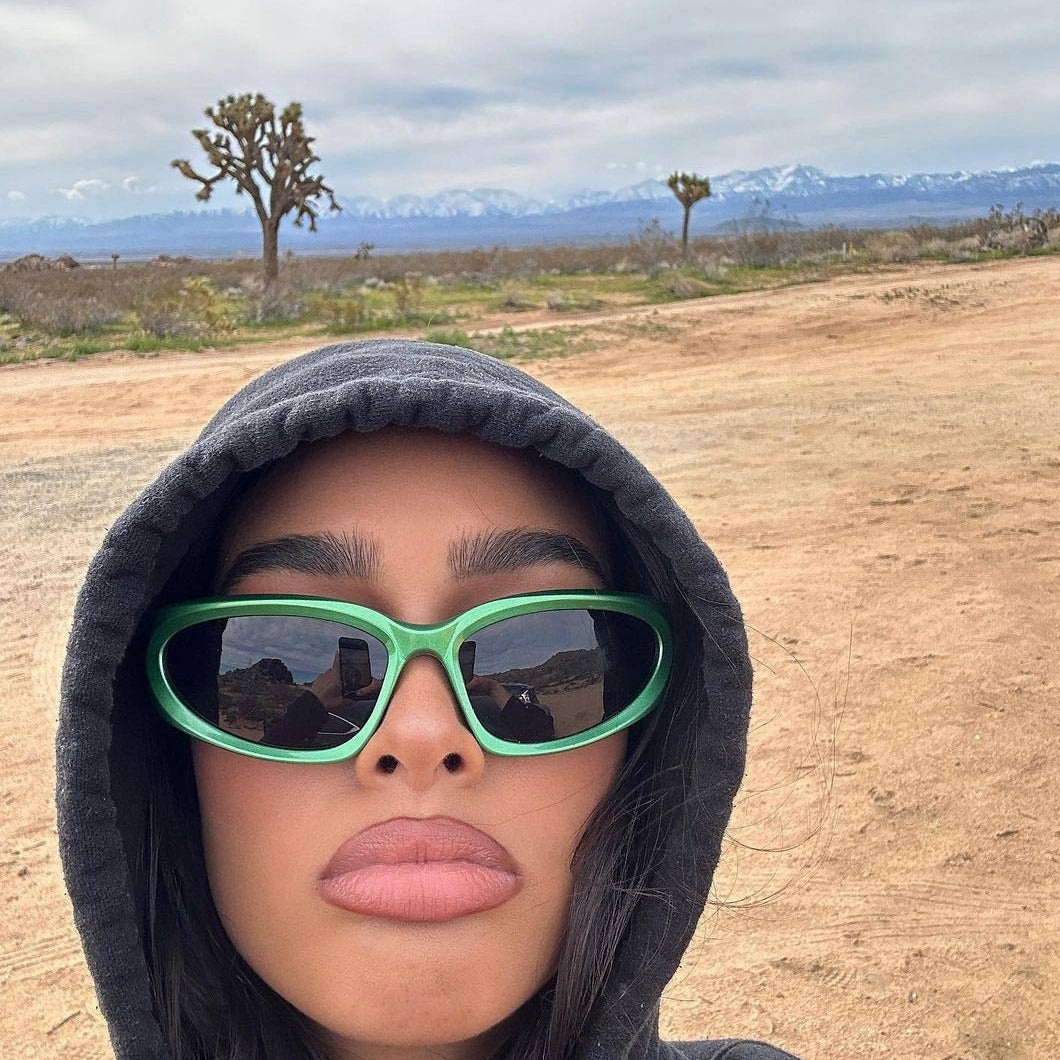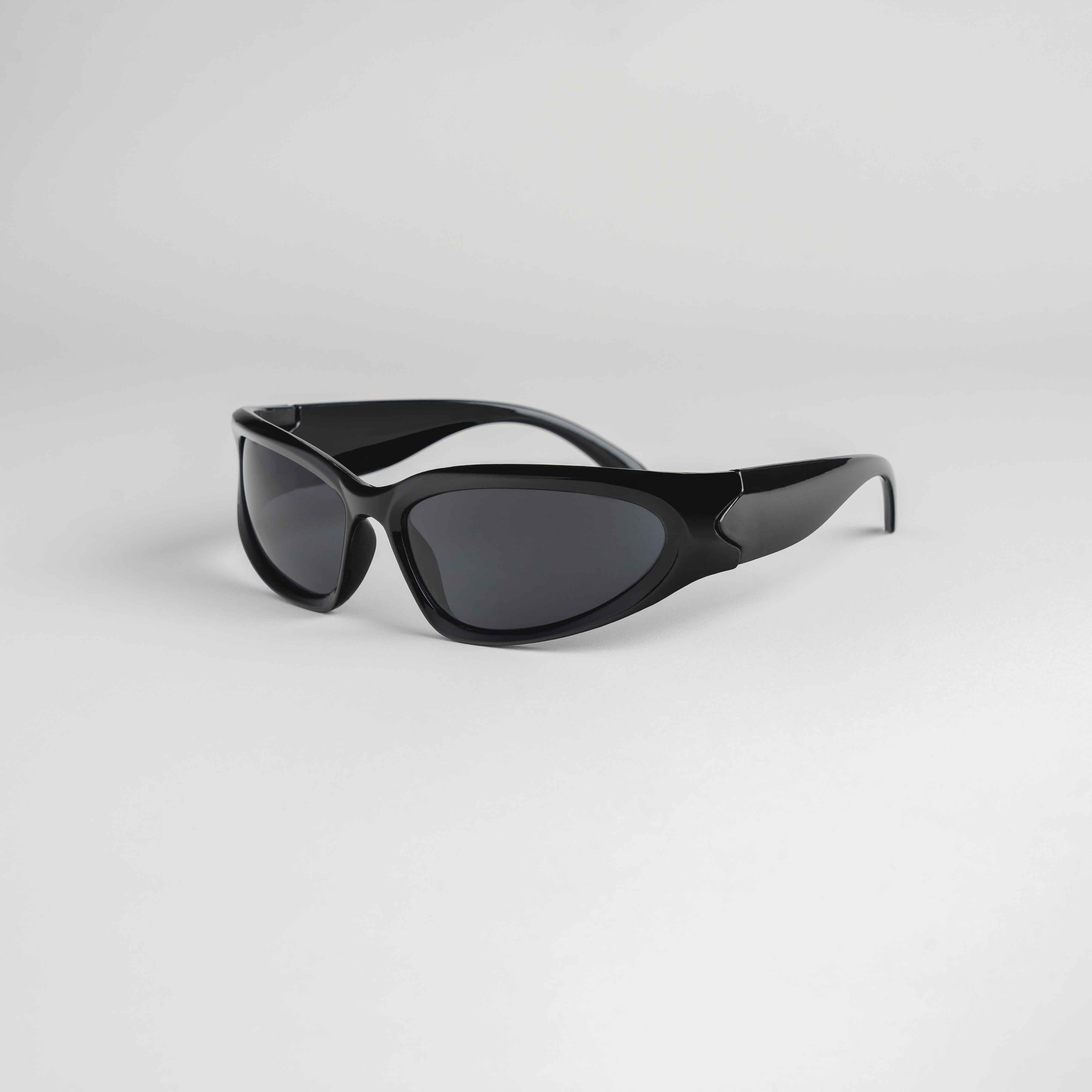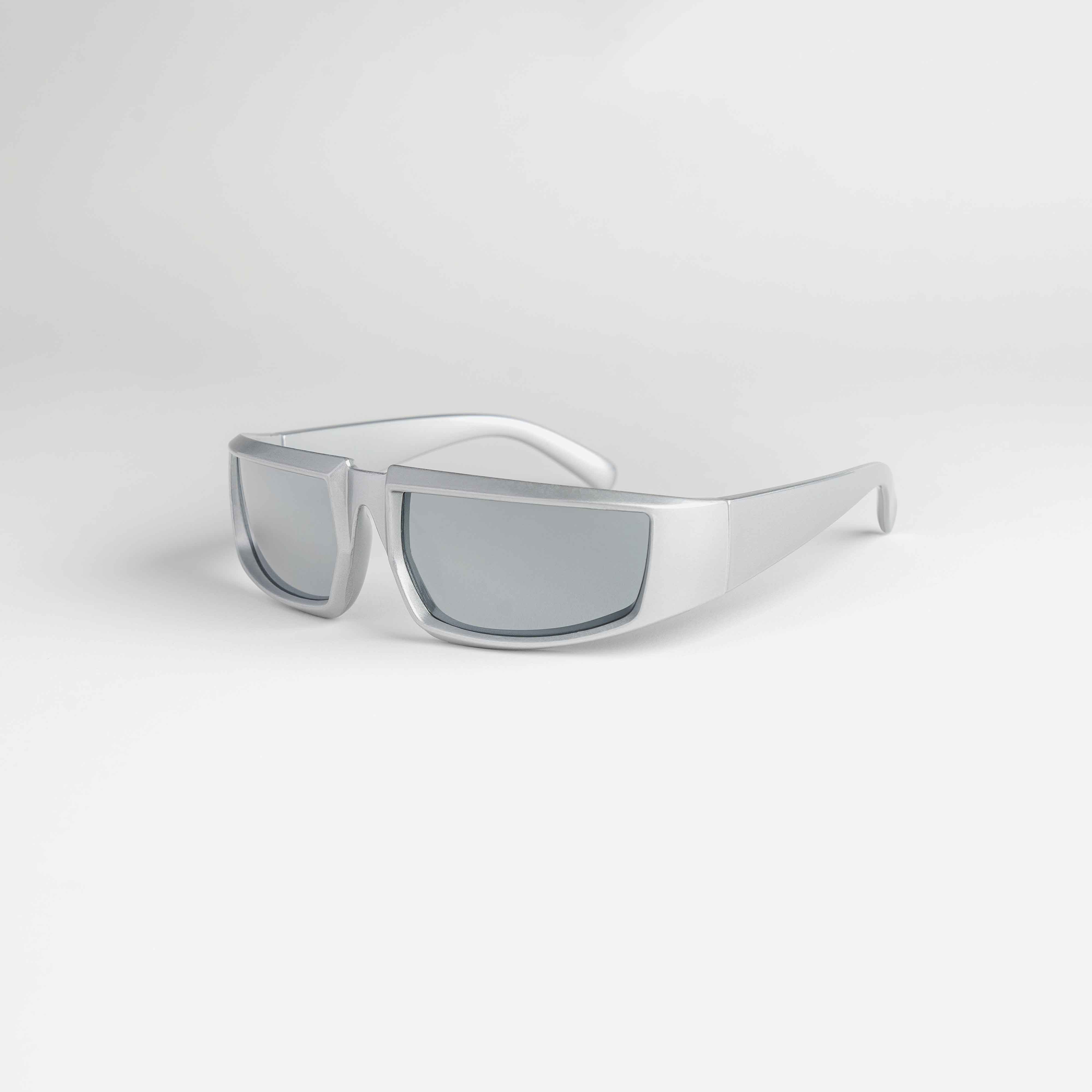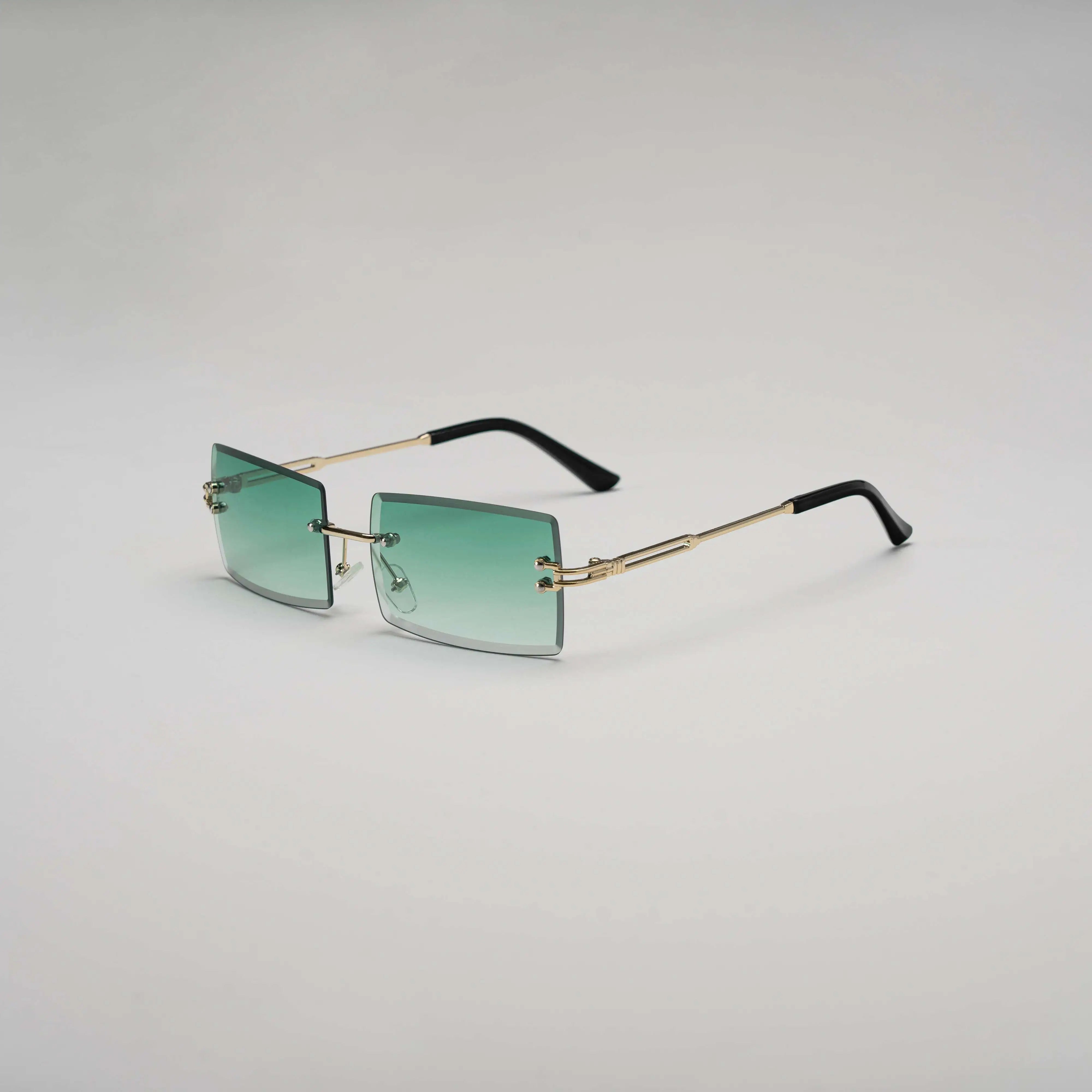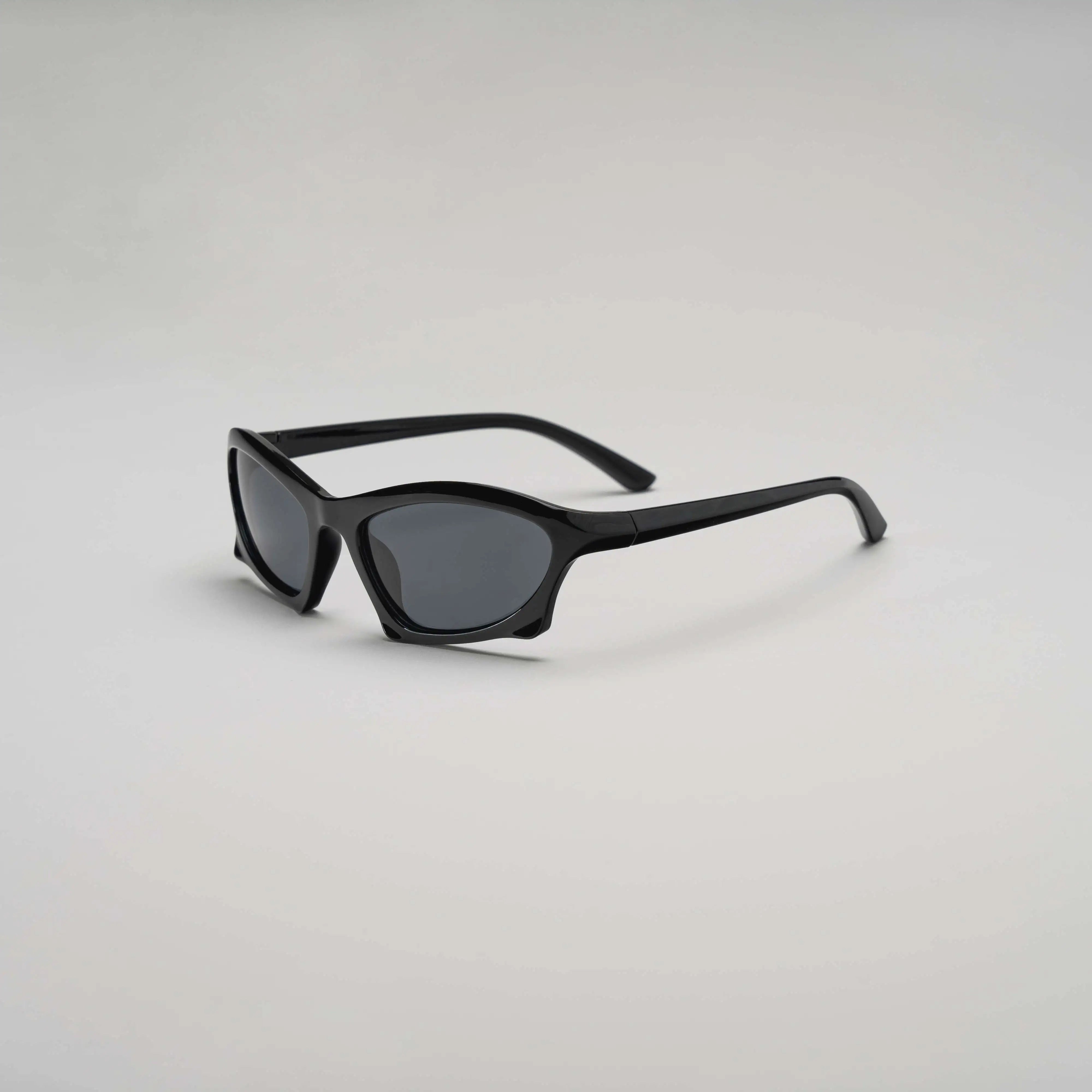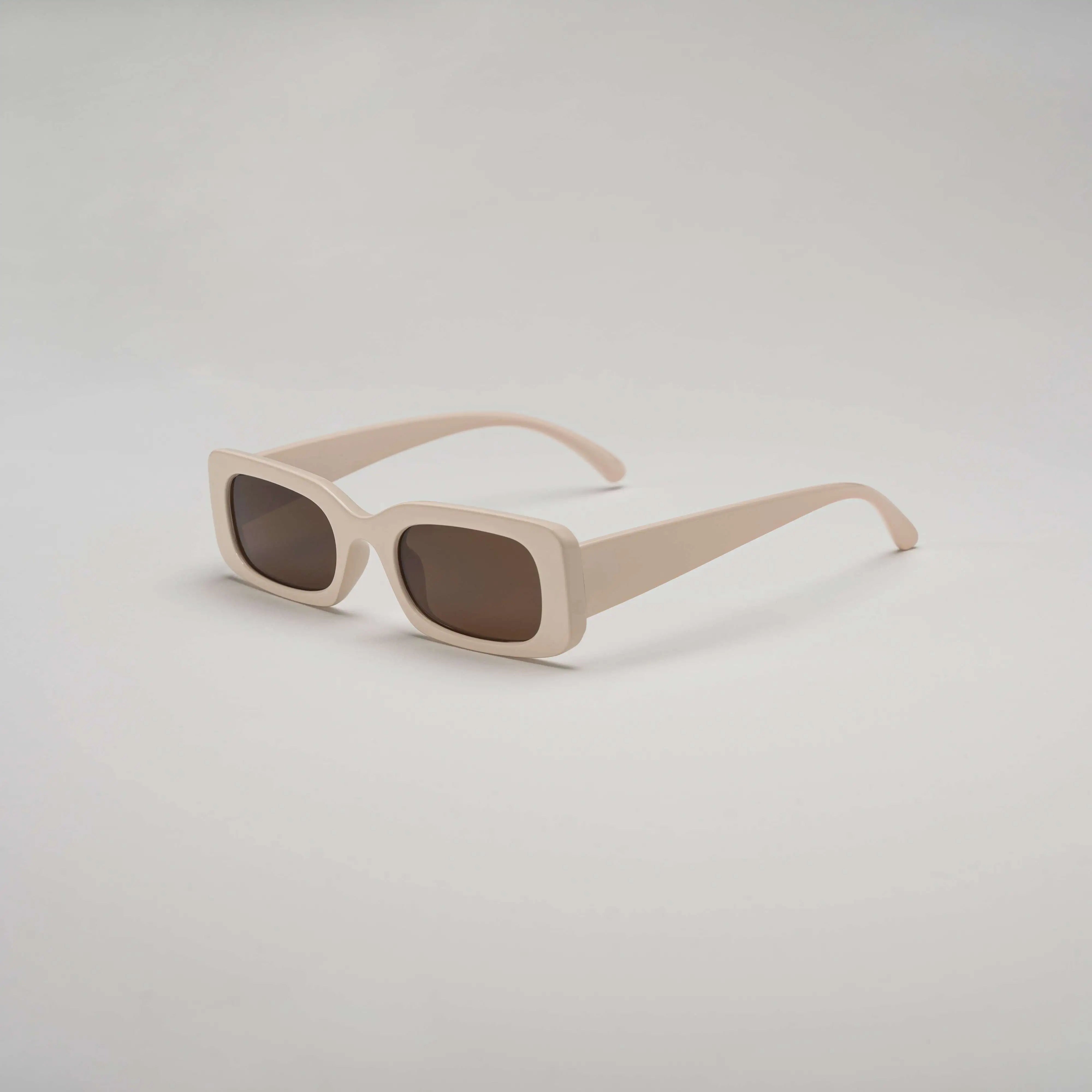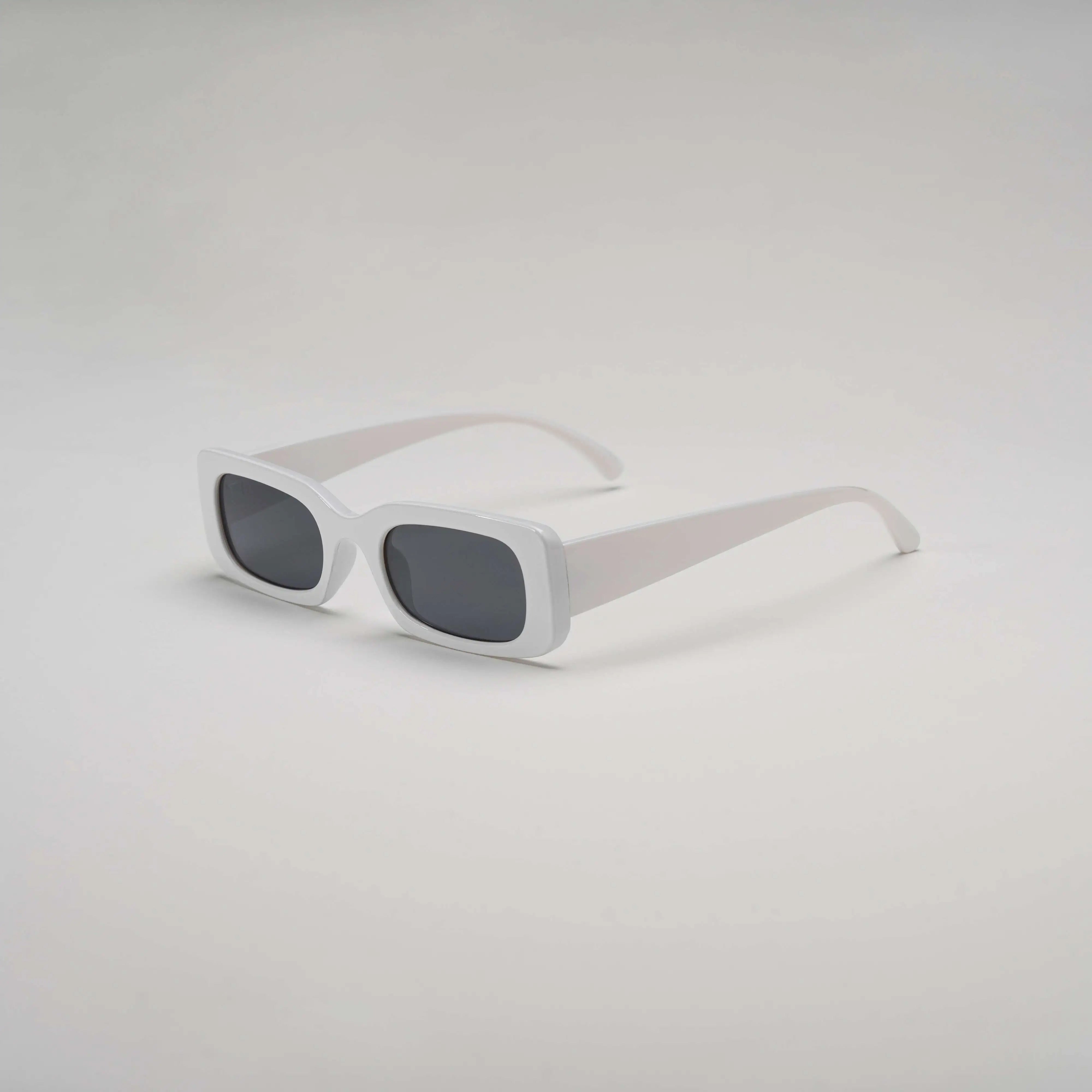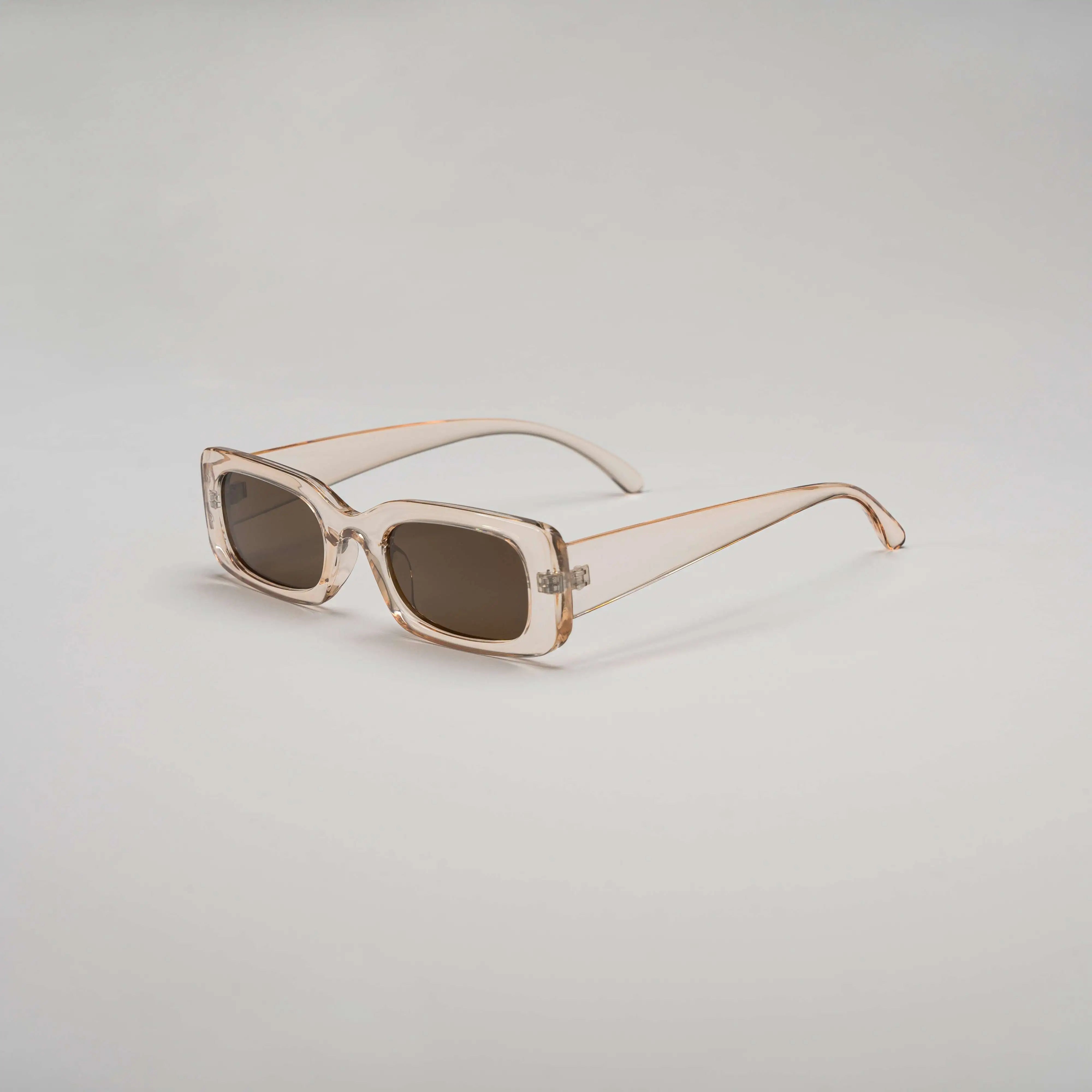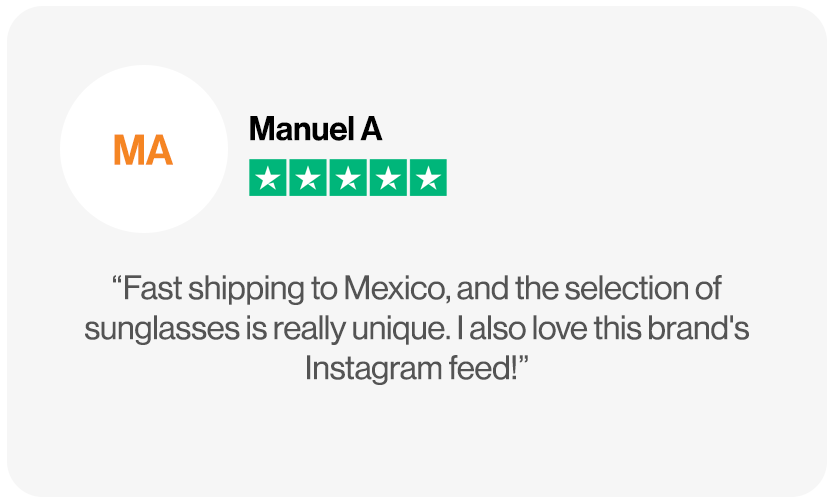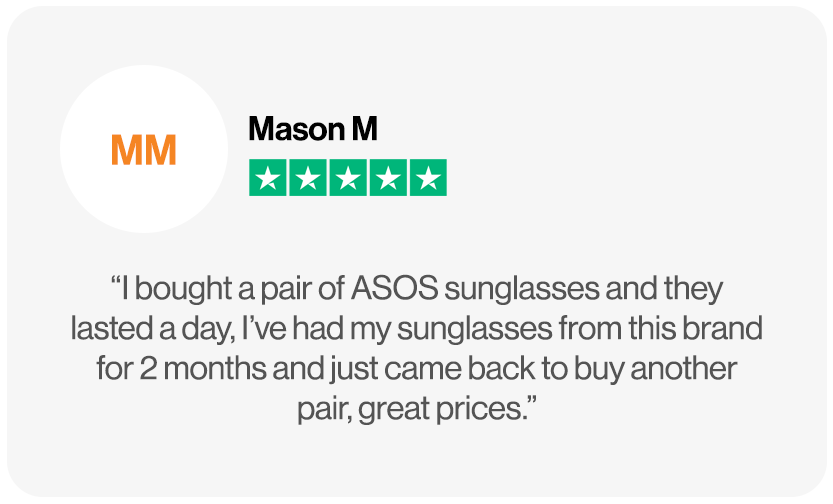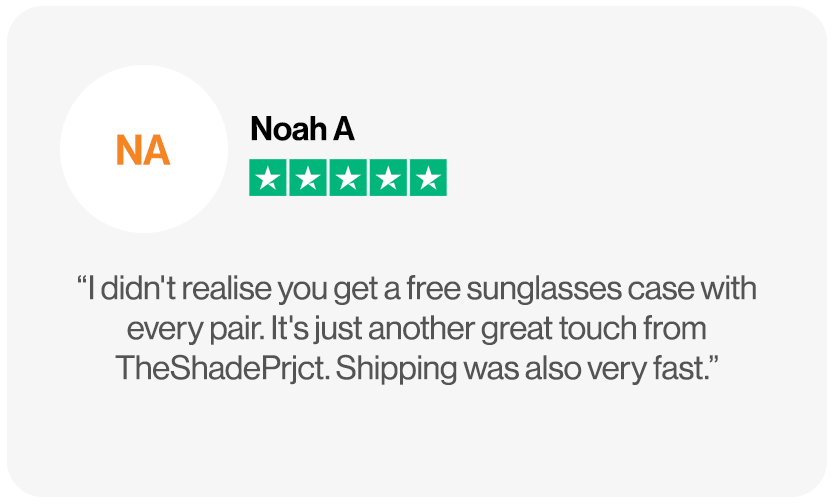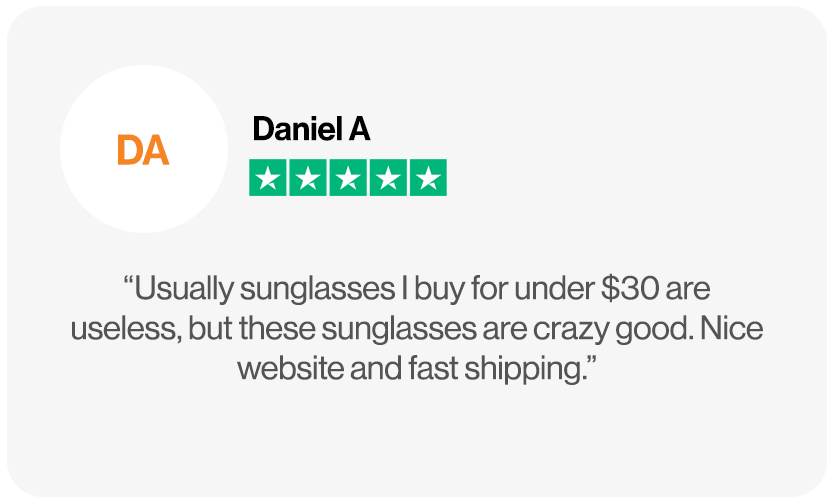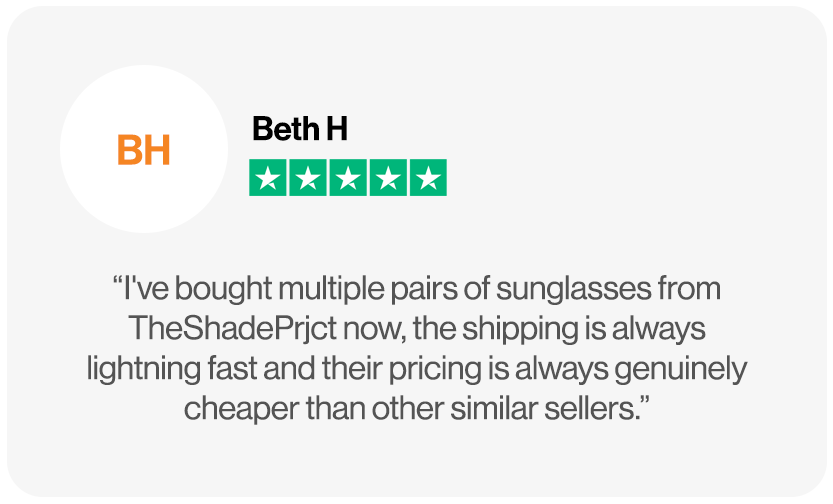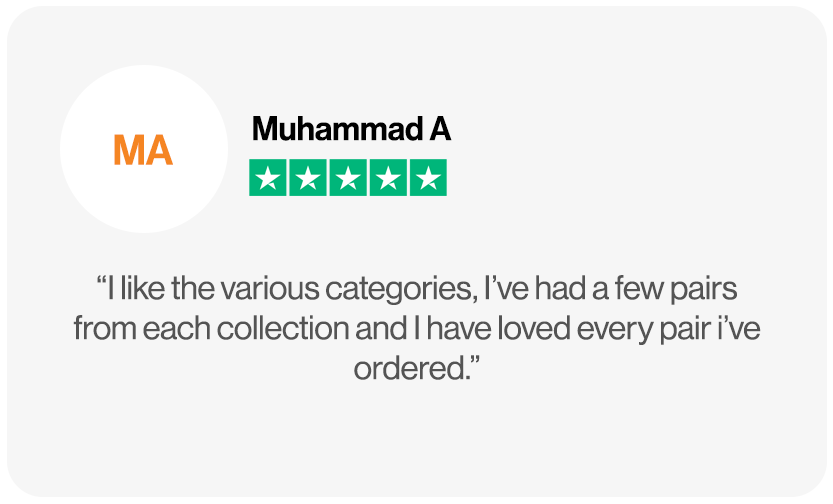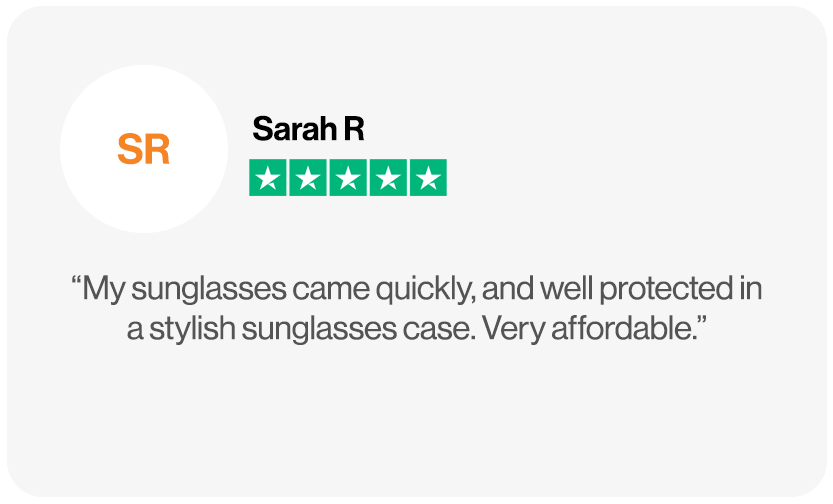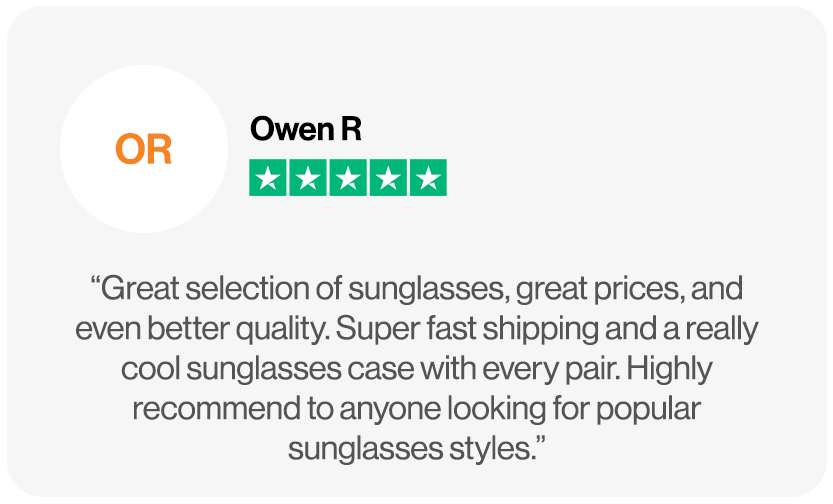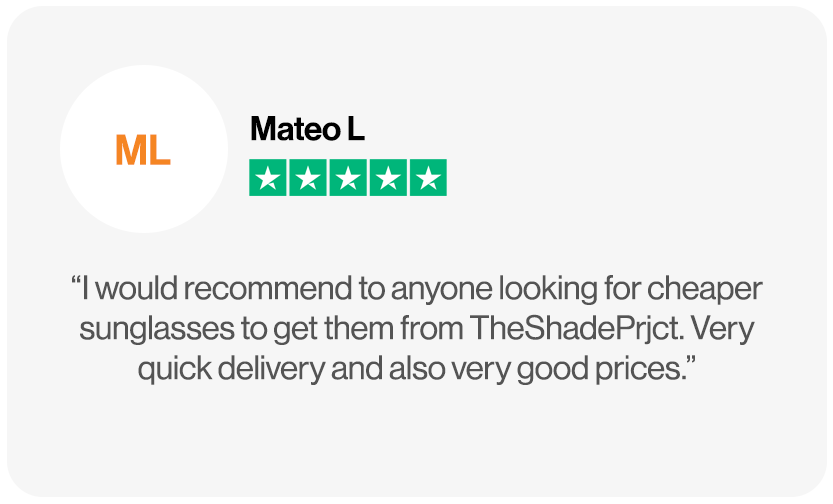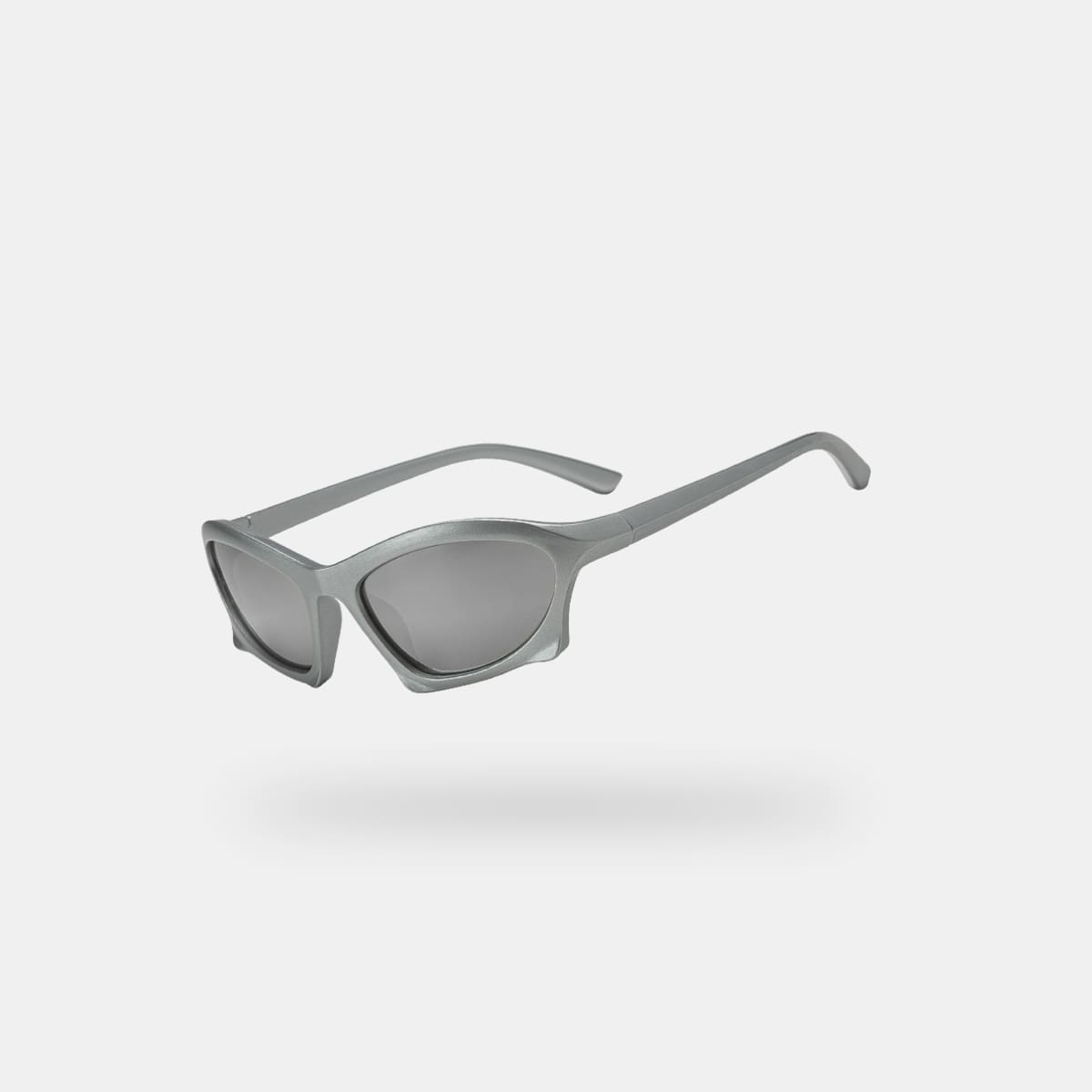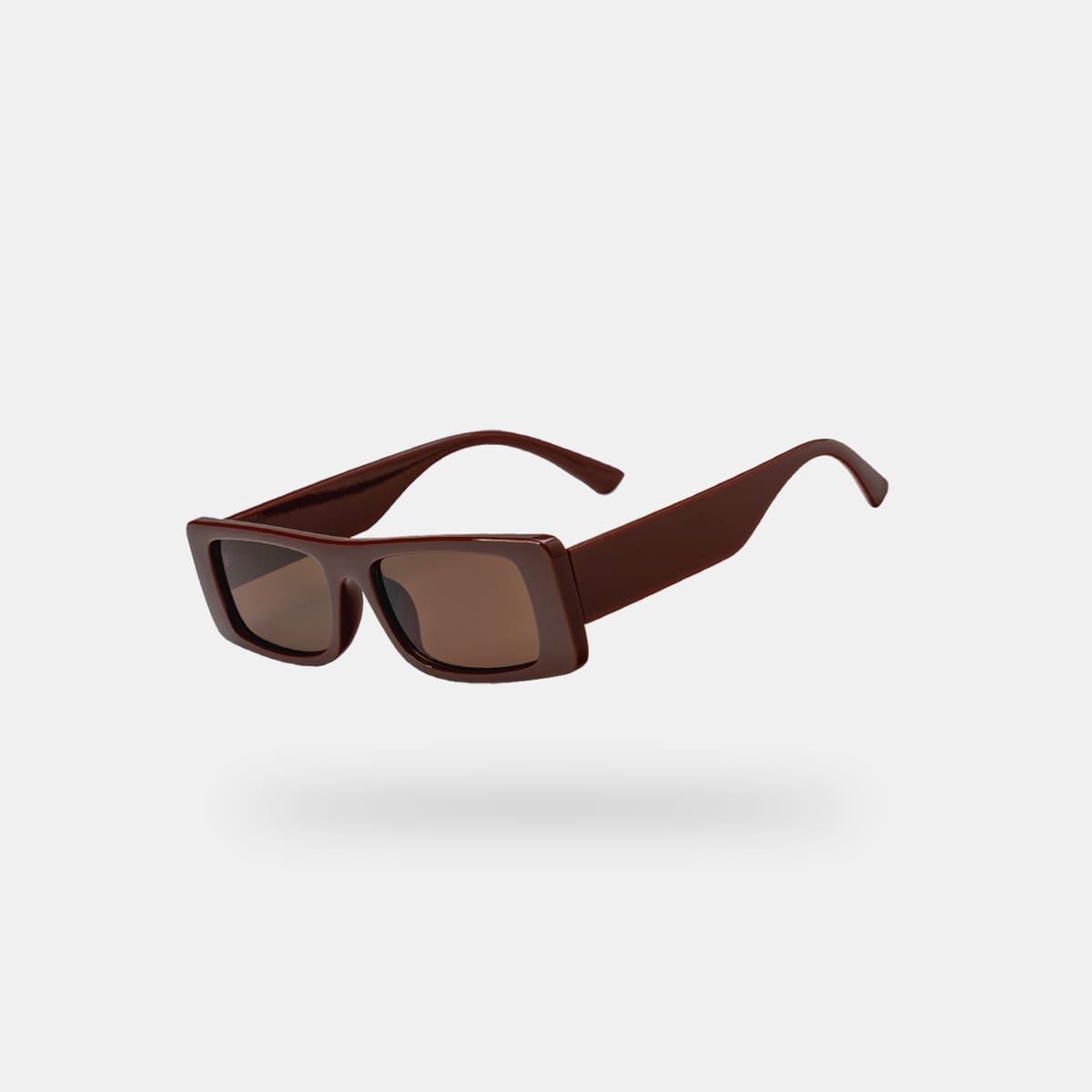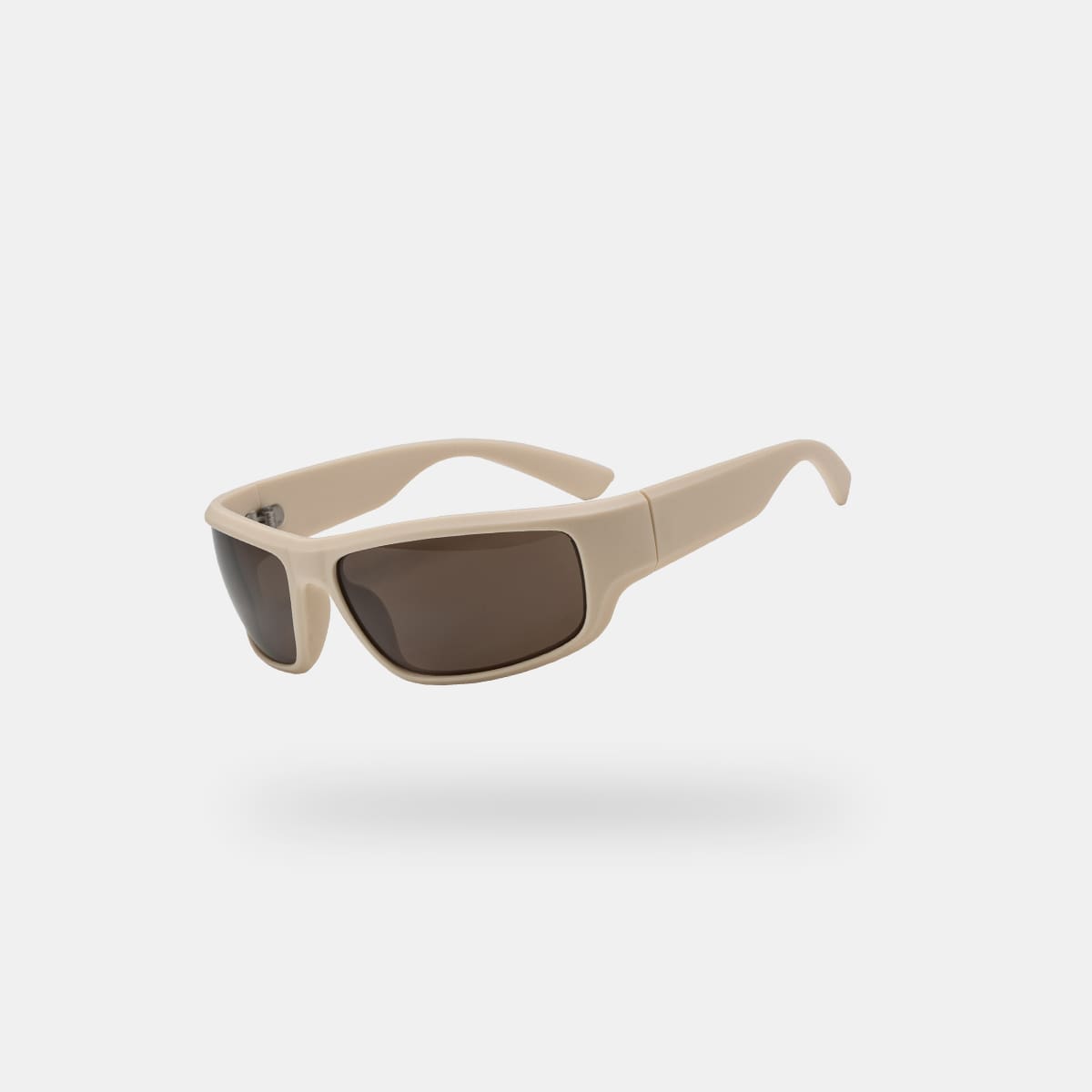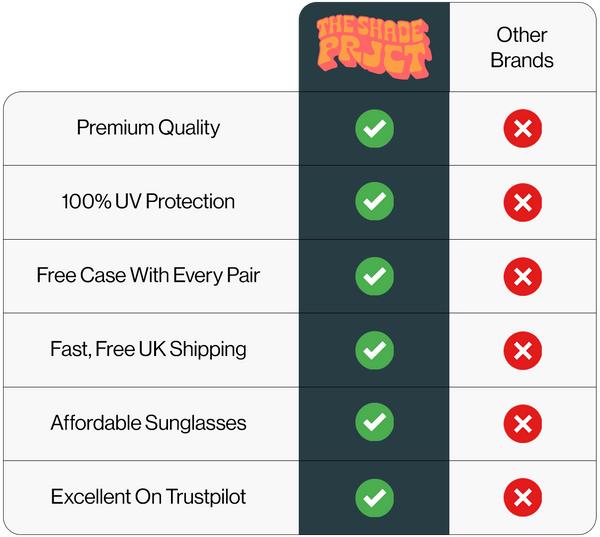What Ray-Ban Models Are There?
Ray-Ban’s Range of Styles: Ray-Ban has produced a wide variety of sunglass models since its founding in 1936 by Bausch & Lomb. The brand quickly became iconic for introducing the Aviator and Wayfarer – two styles that remain among the most recognisable sunglasses in history. When asking what Ray-Ban models are there?, you’ll find everything from classic pilot-shaped frames to retro browline designs and modern oversized looks. This guide will walk you through the most popular Ray-Ban models and help you match those familiar styles to their model names. In doing so, you’ll learn a bit of Ray-Ban’s history (as a company famous for “Wayfarer and Aviator lines of sunglasses”) and understand why Ray-Ban enjoys an iconic status in eyewear.
From Icons to New Classics: If you’ve seen a pair of cool shades in a movie or on a celebrity and wondered what Ray-Ban models are there to choose from, chances are it was one of Ray-Ban’s signature designs. Ray-Ban’s catalog spans timeless designs like the Aviator (born in the 1930s for U.S. military pilots) and the Wayfarer (a 1950s design that defined rock ‘n’ roll cool), as well as later introductions like the Clubmaster (a browline style channeling 1960s retro) and newer favourites like the Erika (a modern, fashion-forward frame). In this comprehensive guide, we’ll focus on Ray-Ban Models that are the most popular and culturally significant, providing a description of each, what makes them stand out, and their average prices. By the end, you’ll be able to identify the key Ray-Ban models and see how each distinct style earned its place in the Ray-Ban hall of fame.
Ray-Ban’s legacy has been built on innovation and style – from General Douglas MacArthur sporting aviators in WWII to Hollywood films making the Wayfarer a household name. So, what Ray-Ban models are there that you should know about? Let’s dive into the Ray-Ban models that have defined the brand.
Ray Ban Models
When people think of Ray Ban Models, a handful of classic designs immediately come to mind. Below we highlight the most popular Ray-Ban models (by sales and pop culture recognition), each with a brief description, an approximate average price, and an image to help you recognize the style. These are the Ray-Bans you’ve likely seen on celebrities, in movies, or on the person next to you – and now you’ll know them by name.
Ray-Ban Aviator

Ray-Ban Wayfarer

Ray-Ban Clubmaster

Ray-Ban Round Metal

Whether in classic G-15 green lenses or funky mirrored colours, the Ray-Ban Round adds a boho-chic statement to any outfit.
Ray-Ban Erika

One of the more modern designs in Ray-Ban’s catalog, the Ray-Ban Erika (RB4171) has quickly become a most popular Ray-Ban sunglasses style for the younger generation. The Erika features an oversized “panthos” shape – essentially a rounded lens with a slight cat-eye flair – and a soft bridge. The front frame is often a lightweight nylon (sometimes with a rubberised texture), and the temples are thin metal with colour-coordinated temple tips. This mix of materials makes the Erika both stylish and comfortable (not to mention lighter on the nose). It’s a go-to for those who want a casual-yet-trendy look that’s a bit softer than the bold Wayfarer.
Price: typically a bit lower than the all-time classics – around £138–£158 depending on lens options. For example, the standard Erika Classic often costs about £138 on retail sites, while versions with polarised lenses run closer to £158. With its array of frame colours (from classic tortoise to floral or velvet finishes) and gradient lens tints, the Erika offers a fashionable twist to the Ray-Ban lineup and has become a bestseller in its own right.
(Other popular Ray-Ban styles include the Justin (a modern squared Wayfarer variant), the Caravan (a squarer take on the Aviator), and the Clubround (which combines Clubmaster and Round features). However, the models listed above are the core styles that have broadest recognition.)
What Are the Most Popular Ray Ban Sunglasses?
When it comes to the most popular Ray-Ban sunglasses, a few superstar models consistently top the list. In fact, Ray-Ban itself notes that its “most popular sunglasses are the Wayfarer, Erika, and Aviator models.” These three styles represent the brand’s blend of timeless design and contemporary appeal, and each is popular for distinct reasons:
- Ray-Ban Wayfarer – The Timeless Trendsetter: The Wayfarer is often cited as Ray-Ban’s best-selling model of all time. Its popularity stems from its iconic shape and cultural history – from 1980s Hollywood films to countless musicians adopting them, Wayfarers exude a cool factor that never seems to fade. They suit a wide range of face shapes and both men and women, making them a perpetual favourite. Many consider the Wayfarer “the most recognisable and iconic silhouette in the history of sunglasses” which explains why it’s still trending after 60+ years.
- Ray-Ban Aviator – The Classic that Never Quit: The Aviator’s popularity has surged in waves, famously boosted by the U.S. military and pop culture moments (yes, those Top Gun aviators). Today, the Aviator remains one of the most popular Ray-Ban sunglasses because it merges functionality (excellent coverage and comfort) with a universally flattering style. Celebrities and fashion icons continue to wear Aviators, keeping them in the spotlight. Their enduring trendiness is tied to that effortlessly cool “pilot” look that seems to always come back in style.
- Ray-Ban Erika – The Modern Fave: Newer to the scene, the Erika has rapidly climbed into the top ranks of Ray-Ban’s best-sellers. Particularly popular among younger consumers and women, the Erika is trending due to its oversized yet lightweight design and contemporary colour options. It’s the kind of sunglass you see all over music festivals and Instagram – known for comfort and a fashion-forward look (the matte finishes and gradient lenses hit current style notes). The Erika’s rise shows Ray-Ban’s ability to create new classics that capture today’s trends.
Honourable mention goes to the Ray-Ban Clubmaster, which, while not as universally sold as the above three in recent years, has a cult following. The Clubmaster often cycles back into fashion whenever vintage or geek-chic looks trend, and it was the third best-selling Ray-Ban style in the late 20th century behind the Wayfarer and Aviator. Another current hot item is the Ray-Ban Meta smart glasses (Wayfarer shape with built-in tech), but those are a unique category on their own (more on that later).
In summary, the most popular Ray-Ban sunglasses today are the Wayfarer, Aviator, and Erika – each enjoying best-seller status thanks to a mix of celebrity adoption, design excellence, and sheer timeless (or timely) style. Whether you prefer the bold Wayfarer, the sleek Aviator, or the chic Erika, you’re in good company – these models are consistently at the top of Ray-Ban’s charts and for good reason.
Where Are Ray Bans Made?
Ray-Ban may be an American-born brand, but modern Ray-Bans are no longer made in the USA. So, where are Ray-Bans made today? Since 1999, Ray-Ban has been owned by the Italian eyewear giant Luxottica, and manufacturing now takes place primarily in Italy and also in China. In fact, Ray-Bans are made in both Italy and China – Luxottica operates factories in both countries and maintains that quality standards are the same across Italian- or Chinese-made products. The majority of production still comes out of Italy (especially for higher-end or classic models), but select Ray-Ban models or parts are made in China as well (americansunglass.com).
Don’t be alarmed if your new Ray-Ban’s temple says “Made in China” – it can still be a genuine Ray-Ban. According to eyewear experts, Luxottica expanded manufacturing to China as it grew, but “their factories in Italy and China produce Ray-Ban’s entire line” with no compromise in materials or machines used. In short, authentic Ray-Bans might be labeled made in Italy or made in China (and occasionally, you might find older stock or special editions made in other countries). If you happen to come across a vintage pair from before 1999, those would likely be made in the USA by Bausch & Lomb (a collector’s item or a lucky thrift store find).
Who owns Ray-Ban? It is owned by Luxottica Group, an Italian company that is now part of the merged entity EssilorLuxottica. Luxottica acquired Ray-Ban in 1999 for $640 million, taking over from B&L and moving production overseas. So while Ray-Ban is often thought of alongside classic American brands, it’s been under Italian ownership for over two decades.
Ray-Ban Alternatives
If someone loves the Ray-Ban vibe but wants to explore other brands (perhaps for price or style differences), there are several noteworthy alternatives. Some popular Ray-Ban alternatives include:
- Persol: Another heritage Italian brand (also owned by Luxottica) known for high-quality acetate sunglasses. Persol offers similar quality and timeless style – Steve McQueen’s Persol 714 folding sunglasses are as legendary as any Ray-Ban. They’re a great alternative if you want superb craftsmanship and a touch of old-school Hollywood flair (with many models still hand-made in Italy).
- Warby Parker: A modern direct-to-consumer brand offering trendy eyewear at a fraction of Ray-Ban prices. Warby Parker’s sunglasses often take inspiration from classic shapes (they have Wayfarer-like and Aviator-like models) but typically cost less and come with prescription options easily. They’re an alternative if budget and trying new styles easily are priorities.
- Maui Jim: If your focus is on lens technology, especially polarization, Maui Jim is a top alternative. This Hawaiian-born brand is famed for its polarized lenses that offer crystal-clear vision and vibrant color enhancement. Maui Jim frames tend to be more sport or casual styled, but they’re extremely high quality. Someone looking for great outdoor eyewear (fishing, beach, driving) might consider Maui Jims as an alternative to Ray-Ban’s polarized line.
- Oakley: For a sportier alternative (especially for activities like cycling, running, or golf), Oakley – also under Luxottica – provides cutting-edge lens tech and wraparound designs. While Oakley’s style is very different from Ray-Ban’s classic fashion orientation, for those who need performance sunglasses, Oakley is a go-to. It’s worth mentioning if you’re comparing brands under the same corporate umbrella.
- Randolph Engineering or American Optical: These are American companies that produce aviator-style sunglasses for the U.S. military (Randolph even took over the standard issue Aviator contract after B&L/Ray-Ban). If you want Made in USA aviator sunglasses with similar looks to Ray-Ban Aviators, Randolph (with their Concorde and Aviator models) or American Optical’s Original Pilot are fantastic alternatives. They carry a cool factor (General MacArthur wore AO’s in WWII) and often at a similar price point.
In summary, Ray-Ban’s global success has inspired plenty of alternatives. Whether it’s Persol’s Italian craftsmanship, Warby Parker’s affordable chic, Maui Jim’s lens excellence, or others, consumers have options. People might choose alternatives for different styling, better pricing, or specific features (like sports performance or polarisation), but Ray-Ban’s mix of brand cachet and classic designs keeps it a top choice despite the competition.
Where To Buy Ray Ban Sunglasses?
Looking to get your hands on a new pair of Ray-Bans? The good news is Ray-Ban sunglasses are widely available both in-store and online. Here are some tips on where to buy Ray-Ban sunglasses in different regions:
- Official Ray-Ban Stores & Website: One of the safest places to buy is directly from Ray-Ban. The official Ray-Ban website (ray-ban.com) allows you to purchase online and even offers services like buy online, pick up in store (at Ray-Ban or partner stores). Ray-Ban has flagship stores and boutiques in major cities worldwide – walking into an official store ensures authenticity and the full range of the latest collections. The Ray-Ban site also often lets you customise lenses (Remix program) or order prescription lenses. Buying direct from Ray-Ban gives you access to their warranty and customer support easily.
- Sunglass Hut and Opticians: Sunglass Hut, a global retail chain owned by Luxottica, is a go-to physical store for Ray-Bans in many countries (US, UK, and beyond). They carry all the classic Ray-Ban models and seasonal releases. Department store optical sections and local eyewear shops (optometrists/opticians) are also reliable spots to find Ray-Bans. For example, in the UK, shops like Sunglass Hut, Vision Express, or John Lewis carry Ray-Ban sunglasses. In the US, you’ll see Ray-Bans sold at Macy’s, Nordstrom, LensCrafters (another Luxottica retailer), and even some Bass Pro/Cabela’s (for the outdoorsy styles). When buying in person, you can try on different sizes and fits – helpful for frames like the Aviator which come in multiple sizes.
- Online Retailers: Online shopping is extremely popular for Ray-Bans, but stick to reputable retailers to avoid counterfeits. In the US, Amazon is a major seller of Ray-Ban sunglasses – just be sure the listing says “Sold by Amazon” or an authorized dealer (and watch out for unusually low prices). Amazon’s Ray-Ban selection is vast, and you can often find deals (e.g., during seasonal sales, an Aviator that retails for £202 might be on Amazon for ~£150. Other good online options include Zappos, FramesDirect, GlassesUSA, and Best Buy (which surprisingly sells Ray-Ban Meta smart glasses). In the UK/EU, aside from Ray-Ban’s official site, check out Mister Spex, SmartBuyGlasses, or Shade Station, which often have competitive pricing on authentic Ray-Bans. Also, the Ray-Ban official site has country-specific versions (Ray-Ban UK, Ray-Ban EU, etc.) that will ship locally.
- International Considerations: Ray-Ban is a global brand, so wherever you are – Australia, India, South America, etc. – you likely have local retailers that carry them. In Australia, for example, Sunglass Hut and OPSM stock Ray-Bans. In India, you can find Ray-Ban at Shopper’s Stop or authorized dealers in malls. Ray-Ban’s own site will often redirect you to a regional site. There’s also the Luxottica-backed e-commerce site FramesDirect that ships internationally. If you’re traveling, duty-free shops in airports commonly have Ray-Ban stands, often at slightly better prices due to tax-free shopping.
Buying Tips: Always ensure you’re buying from an authorised seller. Ray-Bans are one of the most counterfeited sunglasses, so if you see a price “too good to be true” from an unknown website, it probably is (fake). Stick with well-known stores or Ray-Ban’s site to guarantee you get the real deal. Also, consider after-sales service – buying from a local optical shop might make it easier to get adjustments or to utilise Ray-Ban’s warranty, whereas buying online might be cheaper.
In summary, you can buy Ray-Ban sunglasses at many places: the official Ray-Ban website (or store), Sunglass Hut/optical retailers, big department stores or online marketplaces like Amazon. In the UK and Europe, check Ray-Ban.com (UK) or trusted online eyewear shops; in the US, retailers like Macy’s, Amazon, or Ray-Ban.com (US) are popular choices. Wherever you choose, enjoy the shopping – half the fun is trying on those classic frames and finding the Ray-Ban model that’s perfect for you!
How do Ray-Ban Meta glasses work?
Ray-Ban Meta smart glasses (the collaboration with Facebook/Meta, formerly known as Ray-Ban Stories in the first gen) work by integrating cameras, speakers, and sensors into a classic Ray-Ban frame (like the Wayfarer shape) and pairing with your smartphone. In essence, they function as wearable smart devices that allow you to capture photos/videos and listen/interact, all hands-free. Here’s a breakdown of how they work:
- Built-in Cameras: The glasses have tiny cameras near the temples. The new Ray-Ban Meta glasses have improved 12 MP cameras that can shoot 1080p video (up to 60 seconds clips). You can tap a button or use a voice command to take a photo or start recording a video from your point of view. An LED light on the front will illuminate to let people around you know you’re recording (a privacy feature).
- Audio and Microphone: They have open-ear speakers built into the arms, so you can listen to music or take phone calls through the glasses. Because the speakers don’t go in your ears, you still hear your environment (it’s like having tiny external speakers next to your ears). A multi-microphone array is built in for voice commands and for picking up sound when recording videos. The audio tech is pretty advanced – the latest model added more speakers and bass for improved sound, and uses multiple mics for better voice clarity and even directional audio capture.
- Connectivity and App: The glasses connect to your smartphone via Bluetooth (and Wi-Fi for data transfer) using the Meta View companion app. Through the app, you set up the glasses, sync your captures, and can adjust settings. Essentially, the phone and app act as the brains/storage while the glasses are the capture device. Once paired, you can use the glasses to do things like play your Spotify, answer calls, or ask questions to a voice assistant, with the phone providing the connection to the internet.
- Voice Commands and Meta AI: A key feature is the “Hey Meta” voice command. The Ray-Ban Meta glasses support a voice assistant – you can say “Hey Meta” to issue commands. For example, “Hey Meta, take a photo” will snap a pic without you touching anything. The new generation even integrates Meta AI, meaning you can ask general questions or, impressively, ask about what you’re seeing. (Meta has demoed a feature where you can look at an object and ask the AI assistant about it – kind of like visual search via the glasses.) This is all done with your voice and the built-in mics, leveraging the connected phone’s internet/AI capabilities.
- Touch Controls: The glasses have touch-sensitive temples. By swiping or tapping on the side, you can control volume, skip tracks, answer calls, etc. This provides a way to control playback and other functions discreetly.
- Battery and Charging: Ray-Ban Meta glasses come with a special charging case (it looks like a chunky glasses case). You charge the glasses by placing them in the case, which itself holds extra battery life (the latest case can recharge the glasses multiple times, providing up to ~36 hours of use total with case top-ups). The glasses’ internal battery lasts around 4-6 hours of intermittent use (varies with recording or music time). You recharge the case via USB-C.
In practical use, here’s how Ray-Ban Meta glasses work day-to-day: You put them on like normal sunglasses (they have transparent and sun lens options). They are paired to your phone (say an iPhone or Android). If you want to capture a moment, you press the button or say “Hey Meta, record a video” – the glasses will record from your perspective and save the video to the app. If you get a phone call, you can tap the temple to answer and talk hands-free, hearing the caller through the speakers. You can also listen to music or podcasts as you walk around, without needing earphones. Essentially, they merge tech into eyewear so you don’t have to pull out your phone for certain tasks. It’s a bit of a James Bond-like experience: communicating and shooting photos through your sunglasses.
To set them up initially, you need to connect them with the Meta View app on your phone and log in with a Meta (Facebook/Instagram) account. Once that’s done, they will auto-connect whenever you wear them and have your phone nearby. They work best within that Meta ecosystem, though basic photo taking and audio functions don’t require actively using Facebook etc., it’s just the account for setup.
In summary, Ray-Ban Meta glasses work by pairing to your smartphone and using built-in cameras, microphones, and speakers to let you capture life’s moments and interact with audio without holding a device. You control them via voice (e.g., “Hey Meta” commands), touch gestures, or the button, and the content you create syncs to your phone through the Meta View app. They basically function as an extension of your phone, but in a stylish Ray-Ban frame – so you can remain present in the moment (or look like you’re just wearing normal shades) while recording or listening. It’s wearable tech blending into everyday eyewear, giving you a taste of a sci-fi future in a very familiar form factor.
Ray Ban Sunglasses - Frequently Asked Questions
Where are ray bans made?
Ray-Ban sunglasses are manufactured in Italy and China. Both locations follow the same quality standards set by the brand. While many people assume Ray-Bans are only made in Italy, models made in China are also authentic.
Can ray ban replace lenses?
Yes, Ray-Ban offers lens replacement services. You can send your sunglasses to their repair center or use an authorised retailer. There are also third-party companies that provide custom replacement lenses for Ray-Ban frames.
What are the most popular ray ban sunglasses?
The most popular Ray-Ban sunglasses are the Wayfarer, Aviator, and Erika. These styles are bestsellers thanks to their timeless designs, comfort, and strong presence in pop culture.
Where to buy ray ban sunglasses?
You can buy Ray-Ban sunglasses from the official Ray-Ban website, Sunglass Hut, department stores like Macy’s or John Lewis, and trusted online retailers such as Amazon, FramesDirect, and GlassesUSA. Always ensure the seller is authorised to avoid counterfeits.
Are ray ban metas waterproof?
Ray-Ban Meta glasses are water-resistant, not fully waterproof. They can handle light splashes or rain but should not be submerged in water or worn while swimming or showering.
What are ray bans aviators sizes?
Ray-Ban Aviators typically come in three main sizes: 55mm (small), 58mm (standard), and 62mm (large). These measurements refer to the width of each lens.
What size ray bans should i buy?
The right size depends on your face shape and fit preference. Medium or standard sizes fit most people, but smaller or larger options are available. You can check your current glasses for size or try on Ray-Bans in store for the best fit.
What are the most expensive ray ban sunglasses?
The most expensive Ray-Ban sunglasses are limited editions like the Aviator Solid Gold, which retailed for several thousand dollars. Most premium Ray-Bans range from £200 to £400, with standard models typically priced lower.
What are some ray ban alternatives?
Popular Ray-Ban alternatives include Persol, Maui Jim, Warby Parker, Randolph Engineering, and American Optical. These brands offer different strengths such as premium materials, polarised lenses, or lower price points.
Are ray bans polarised?
Some Ray-Ban sunglasses are polarised, but not all by default. You can choose polarised versions when ordering, and they are typically marked with a "P" on the lens or product name.
Are ray bans worth it?
Yes, Ray-Bans are considered worth it by many for their quality, timeless style, and durability. They offer UV protection, strong build quality, and iconic designs that don’t go out of fashion.
Who owns ray ban?
Ray-Ban is owned by Luxottica, which is part of the larger EssilorLuxottica group – a global eyewear company based in Italy.
How do Ray-Ban Meta glasses work?
Ray-Ban Meta glasses work by connecting to your smartphone via Bluetooth and Wi-Fi. They let you take photos, record videos, listen to music, make calls, and use voice commands through built-in cameras, speakers, and microphones, all while looking like classic Ray-Ban frames.

